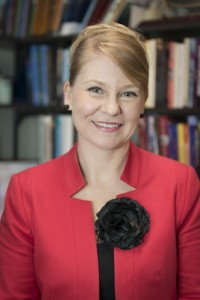The impact of a range of performing arts-based programs on Australian prisoners has been explored in the first national research project of its kind.
Captive Audiences, led by Griffith University’s Queensland Conservatorium Research Centre (QCRC), in collaboration with the School of Criminology and Criminal Justice and School of Education and Professional Studies, has sought to make inroads towards a common language between arts practitioners and corrective facilities.
The project has documented current practices and established a framework to develop new approaches to enhance prisoner wellbeing and post-release outcomes.
According to Chief Investigator Associate Professor Brydie-Leigh Bartleet, understanding the impact of arts-based programs on prisoner’s lives has the potential to transform significant aspects of prison service delivery in Australia.
“Across the world, performing arts based programs are increasingly recognised for their potential to change both prisoner development and the provision of humane, effective and safe correctional service,” Associate Professor Bartleet says.
“In the past 30 years, theatre, music, dance, performance poetry, song writing, opera and film have had a growing worldwide presence in prisons.
“Such programs have the potential to reduce conduct violations and repeat incarcerations, to introduce positive life skills, enhance self-worth and ultimately reduce the costs of imprisonment to society.
“Yet despite the sheer number and diversity of programs across the world, previously there was very little research into the presence and effect of such initiatives in Australia.
“The results of this study will now enable corrective service providers across the country to develop, implement and evaluate more effective performing arts programs for the future.”
Five case studies were assessed during the project, including Somebody’s Daughter Theatre in Melbourne, Drumbeat in Alice Springs, One Mob Different Country in Darwin, Queensland Shakespeare Ensemble in Brisbane and Unlocked throughout New South Wales.
The need for a “common language”
Associate Professor Brydie-Leigh Bartleet says one of the most common observations throughout the research was the pressing need for “a common language”.
“While the intentions of arts facilitators and correctional managers were very similar, it seems that a common language enabling the two to effectively communicate is missing,” she explains.
“There is a need for a national framework and guidelines that allow for new projects with relevance and meaning to be proposed and developed.
“This would also offer correctional professionals with information that can assist their policy development, decision-making and overall engagement with arts projects and approaches to rehabilitation.”
The study was conducted in partnership with Serco, which currently deliver music and theatre programs in prisons throughout Victoria, Queensland and Western Australia.
It incorporated a nation-wide online survey, case studies of selected performing arts programs, field visits, interviews, focus groups, non-participant observations and analysis of reports and audio visual material.
Captive Audiences was supported by the Australia Research Council as a Linkage project with financial and in-kind contributions from partner organisation Serco Asia Pacific.
Chief Investigators for the research included Professor Huib Schippers, Professor Michael Balfour, Associate Professor Brydie-Leigh Bartleet, Dr John Rynne and Research Fellow Ms Linda Davey.
Download the full brochure hereor listen to the interview broadcast on The World Today.

